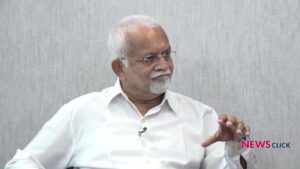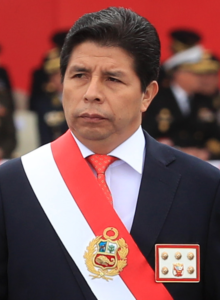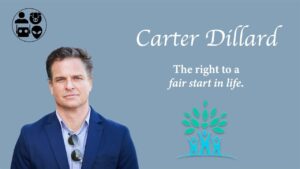New Era Of China-Saudi Ties Riles Iran
The pomp and ceremony of the recent visit by Chinese President Xi Jinping to Saudi Arabia has drawn comparison with the banality and frigid atmosphere surrounding the U.S. President Joe Biden’s trip to the kingdom in July. However, the main difference is that the Saudis organized three separate regional summits for Xi—aside the bilateral summit, a second summit with 21 Arab leaders and a third with seven rulers of GCC countries.
The “three-in-one” conveyed a big signal that Saudi Arabia stands at the heart of China’s Arab world diplomacy. It is in sharp contrast with the transactional relationship that the historic U.S.-Saudi alliance has been reduced to.
Indeed, the nearly three dozen energy and investment deals during Xi’s visit will preserve the core of the strategic interests of Saudi Arabia and China. They encompass frontier areas such as information technology, green energy, cloud services, infrastructure and health and inject a greater sense of alignment between Riyadh’s economic diversification pivot (known as Vision 2030) and China’s Belt and Road Initiative (BRI)-driven development of smart industries and high quality infrastructure, including digital infrastructure, which has the potential to undergird regional connectivity in the coming decades.
As a Chinese commentator noted, Beijing’s green hydrogen and solar energy investments are expected to complement Riyadh’s clean energy push and together they “strengthen adaptive infrastructure in the Arab world.” Take, for example, the landmark agreement inked with Chinese tech giant Huawei, which will open the doors to high-tech complexes in Saudi cities that mesh with China’s 5G development cooperation in many Gulf states (eg., UAE, Kuwait, Qatar.)
As Saudi Arabia synchronizes its priorities in the energy sector with China’s focus on bolstering supply chain resilience in the West Asian region, the kingdom is presenting itself as a regional center for the Chinese factories. This is “win-win,” as stable energy supply chains are critical to growth and recovery prospects of many regional Arab economies.
Suffice it to say that even as new development synergies and the proposed multi-sector collaborations place the China-Saudi comprehensive strategic partnership in a different league, the Arab region as a whole will reap enormous benefits from the partnership’s transformational impact.
The joint statement issued after Xi’s visit speaks about the importance of expanding Saudi-Chinese relations “in their international framework and setting an example of cooperation, solidarity, and mutual gain for developing countries.”
It says, “The Saudi side also stressed the importance of attracting international Chinese companies to open regional headquarters in the Kingdom and appreciated the interest of a number of companies in that regard as they are obtaining licenses to establish their regional headquarters in the Kingdom, to ultimately benefit from the exceptional Chinese experiences and capabilities for the benefit of the economies of the two countries.” Clearly, the signing of a “harmonization plan” between Vision 2030 and the BRI is a game changer.
The first-ever China-GCC Summit and China-Arab League Summit stand out in the current international environment and create prospects of “collective cooperation” between China and Arab countries. They are pegged on joint action by Saudi Arabia and China to strengthen strategic partnership relations between the GCC States and China, conclude a free trade agreement between the GCC and China, and institutionalize the GCC-China Meeting of Ministers of Economy and Trade in a “6 + 1” format between GCC and China.
Equally, on the diplomatic side, the joint statement says, “The Chinese side commended the Kingdom’s positive contributions and outstanding support for the promotion of regional and international peace and stability.”
Particularly noteworthy is China’s strong endorsement of the Saudi stance on Yemen stressing the importance of supporting the Yemeni Presidential Leadership Council.
Unsurprisingly, Xi’s Saudi visit caused disquiet in Tehran. The web of regional alliances that Riyadh has woven for China’s participation is exclusively of Arab countries. And what riles Tehran most is that Saudi Arabia and the Arab alliance will be the most crucial template of China’s regional strategies in the West Asian and African regions.
Iran cannot possibly cope with the development as a rival power center. And it is happening at a time when Iran is surging ahead as the Gulf region’s highflier and Saudi Arabia’s pivotal alliance with the U.S. sank into hopeless disrepair.
The unkindest cut of all must be that although China is a participant in the JCPOA negotiations, the joint statement states that the two sides “called on Iran to cooperate with the International Atomic Energy Agency, maintain the non- proliferation regime, and emphasize respect for the principles of good- neighborliness and non-interference in the internal affairs of states.”
Elsewhere, the joint statement says in a veiled reference to Iran, “Chinese side expressed support for the Kingdom in maintaining its security and stability and affirmed its opposition to any actions that would interfere in the internal affairs of the Kingdom of Saudi Arabia, and rejects any attacks targeting civilians, civilian facilities, territories, and Saudi interests.”
However, Tehran has chosen to ignore all this and instead zeroed in on a particular passage in the China-GCC joint statement to vent its displeasure. The relevant formulation stated: “The leaders affirmed their support for all peaceful efforts, including the initiative and endeavors of the United Arab Emirates to reach a peaceful solution to the issue of the three islands; Greater Tunb, Lesser Tunb, and Abu Musa, through bilateral negotiations in accordance with the rules of international law, and to resolve this issue in accordance with international legitimacy.”
Prima facie, there is nothing explosive here, but Tehran took umbrage that Beijing ignored the Iranian stance that the issue is “non-negotiable” and concerns the country’s sovereignty and territorial integrity.
Iranian commentators and officials have alleged that “China appeared to be taking sides in the dispute.” The Chinese ambassador was summoned to the Iranian foreign ministry and President Ebrahim Raisi has voiced displeasure mentioning China. (See the furious commentary in Tehran Times entitled China’s wrong move on the rotten rope of Persian Gulf Cooperation Council.)
How far this histrionics is to be taken seriously is hard to tell at this point. Tehran’s real grouse could be two-fold: one, that China-Saudi relationship is acquiring gravitas and it may incrementally relegate Iran to a second tier in regional politics.
Of course, Iran has a promising partnership with Russia but that is quintessentially a geopolitical matrix with variables subject to the twists and turns of Moscow’s confrontation with the West under the conditions of sanctions. Meanwhile, the impasse in the nuclear negotiations in Vienna precludes Iran’s normalization vis-a-vis the “collective West.”
The joint statement only perfunctorily takes note of “their determination to develop cooperation and coordination in defense fields” and of the two countries “cooperating in the peaceful uses of nuclear energy.” But defense ties and nuclear cooperation between China and Saudi Arabia have a long history. Nobody will be the wiser, as the Saudis and Chinese officials are known to be in discussion regarding payment mechanisms in local currencies for certain types of transactions.
In the final analysis, Iran can only blame itself. It took an early lead over Saudi Arabia with its much-vaunted 25-year $400 billion road map for Chinese investments but lost the plot, and China likely would have weighed that Saudi Arabia has far more to offer as economic partner than Iran in the near and medium term.
The Saudis know how to put the money where the mouth is; they are not dogmatic; and, Vision 2030 is a honeycomb of mega projects. And in Crown Prince Mohammed bin Salman, they have a decisive leadership. As for China, its economy is slowing down and there is a pressing need to boost exports.
Indeed, the decision on holding biennial Chinese-Saudi summits ensures that the top-down approach of management, which is characteristic of both countries, is closely monitored and adjusted according to needs. Iran, on the other hand, can be an exasperating partner, given its multiple decision-making levels and contrarian autarchic policies.
Most certainly, China is also attracted by Saudi Arabia’s clout in the Arab world as a key factor with the potential to help advance the BRI regionally in the post-pandemic environment.
Tehran has reason to feel worried that the regional balance may shift in favor of Saudi Arabia. It cannot be lost on Tehran that the historicity of Xi’s visit to Saudi Arabia lies in the recreation of the history playing out in West Asia since the secret meeting between the then U.S. President Franklin Roosevelt and King Abdul Aziz of Saudi Arabia off Alexandria in 1945.
Author Bio:
This article was produced in partnership by Indian Punchline and Globetrotter.
M.K. Bhadrakumar is a former Indian diplomat.
Source: Globetrotter




